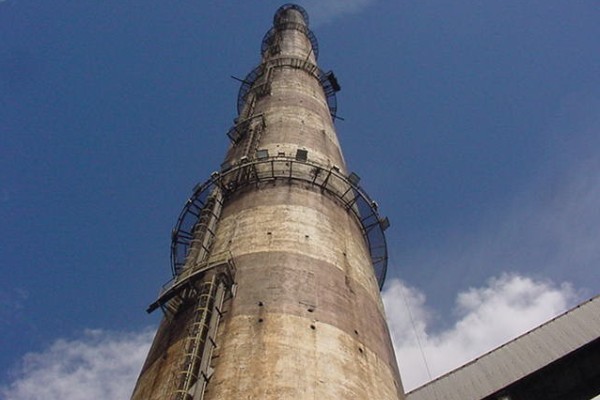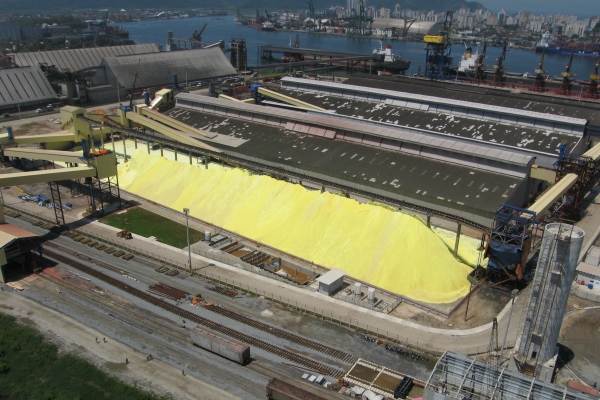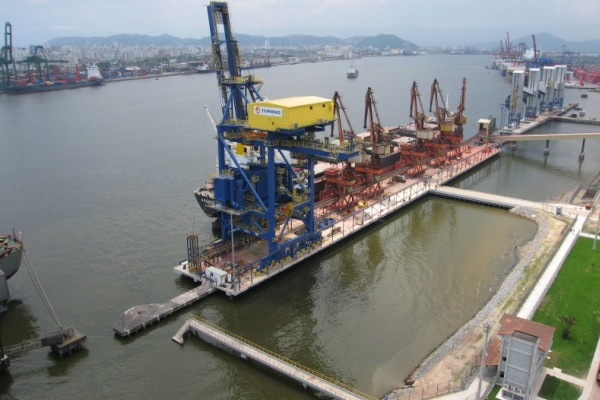Antonio Carmona Filho: Overview of the Civil Engineering Sector in Brazil
Antonio Carmona Filho, President of Exata Engenharia e Assessoria
Antonio Carmona Filho gives an overview of the civil engineering sector in Brazil and presents his company, Exata Engenharia e Assessoria, mentioning some of the currents projects but also success cases such as their famous elevated reservoir in Bahia and their study to repair the two biggest coal silos in the world in Colombia.
Interview with Antonio Carmona Filho, President of Exata Engenharia e Assessoria
Could you start by discussing the civil engineering sector in Brazil at the moment?
The civil engineering sector in Brazil is going through a very interesting phase. There are several construction works; there is investment (national and some foreign investment). Therefore, there are many projects.
To grow too much was never part of our philosophy. We never wanted to grow without being prepared. We have been growing steadily and have been hiring well-prepared employees. Although we are not as big as some other companies, we have very important projects.
Quality for us is extremely important and this current speed of our development normally generates problems. We are facing some problems related to the low resistance of concrete, because there is a lack of qualified labor. The velocity by which the constructions are being built up together with that lack of qualified labor can lead to substantial errors.
There is, of course, a lot of work mainly outside Sao Paulo. We have worked in many construction works in the south of the country, in Rio Grande do Sul, Florianópolis (Santa Catarina), etc. The quantity of buildings aimed at tourism and commerce is enormous. We are still in the euphoria stage.
Could you give us an overview of the company’s history?
I graduated as a civil engineer from the Mackenzie University in 1968. At the time, you could choose your areas of expertise in the engineering courses. The 120 initial students in the civil engineering course were divided in 3 areas and I chose the structures area. Only 9 students wanted to opt for this area due to its difficulty (all others studied the construction area) and when I passed from the 3rd to the 4th year, I was invited to teach. During the 4th year, the professor that taught the reinforced concrete subject invited me to work in his office as an assistant and, of course, I accepted the invitation. I worked in that company several years and I thought that was the moment to adventure myself in a “solo carrier”.

At first, it was very difficult to work alone, because it was a time of crisis and the available work was scarce. Step by step, and as the time passed, the company gained experience, I got to know people within the sector, I made friends, I got to know the market, and the fact that I was a teacher myself helped me a lot (I worked for almost 40 years for the university), because I had permanent contact with the technical world and with the professionals of the area.
I started working on structures, because that was my passion and my area of interest. There was already some need for special materials in construction and I embraced this new demand in the structural area.
Since I had a course in industrial chemistry, I had chemistry knowledge. I started working with special resins, high performance epoxy resin, and all materials necessary to reinforce structures.
I had the opportunity to take a course in Spain at the Instituto de Ciencias de la Construcción Eduardo Torroja. I had good knowledge of Spanish and I already had several friends outside Brazil, so I took my family and went to Spain. It ended up being a key moment of my life: I got the opportunity to meet lots of people that worked on the area and since I already had the experience, I was a differentiated student and was even invited to stay there and teach. Of course I did’ accept: I said that my life and my future were in Brazil. When I was in Spain, the company stayed in the hands of a partner and it continued developing. I had to come back to my country and my company!
When I got back, we started working in two areas that were more specific: the new projects and in the area of structures’ repairs and reinforcements.

Nowadays, we are 5 partners, among them there is one of my former students (Eng. Fernando José Relvas) and my 3 sons (one of them is a business administrator and the two others are civil engineers).
How would you define the company’s philosophy?
In the projects and consultancy area, Exata is small to medium in its size. There are companies within this area that are bigger than us. To grow too much was never part of our philosophy. We never wanted to grow without being prepared. We have been growing steadily and have been hiring well-prepared employees. Although we are not as big as some other companies, we have very important projects.
One of our company’s flags is to “accompany the client and never leave him alone”.
Can you mention some success cases?
Many projects we already worked on made us proud to be a part of them.
We made a famous elevated reservoir. It was built on the ground and elevated 45m above ground level. Its shape is very interesting and it is located in Bahia. It was made when João Durval was the Governor and he wanted to do something very different and spectacular. The project became very successful and the technology used was very interesting and bold.

We also did some buffering of mines. We have been also working in waterfront areas (harbors) hired by third parties and also hired by CODESP. We have done repair works and recovery works (most of them under water) – we have the necessary technology to conduct under water inspections and repairs.
In Colombia, we made a study to repair two coal silos that are the two biggest coal silos in the world.
In Paraguay, we are currently working on a huge pre-molded industrial shed.
What about other current projects?
We work a lot for several cement industries. Some time ago, the work done and supplied by us to these companies represented 70 to 75% of our total work. We’ve made many cement. In some of them we have spent 2 to 5 years working on certain projects.
We also have many other important clients. Recently we have been working for a client that owns the industrial shed in Paraguay and several projects throughout Brazil.
What challenges do you have to face on a daily basis?
We have already faced several challenges in the past.
At first, we did’ have any computer to help us calculate and we had to do everything with a 15cm plastic ruler. For me that was very challenging.
When you are of a certain age, it becomes increasingly difficult to adapt and understand all the revolutionary technologies that come into the market. It is all new; the system used is very different from what you were accustomed to. I have learned that I could not insist on working in the “traditional” way, because the company would not have a future. Several of our colleagues tried to maintain the “old way” by claiming that no computer could substitute our knowledge and our ability. Even I ended up adapting to the new way of doing things (laughs), and I have been fortunate enough to have my sons coming into the company when that change in the system took place. They applied that new way of working and it was a total success. We would never be able to do much of what we do today by working with a plastic ruler.
For the future, I have been trying every day to make people that work here absorb my knowledge (the one that is inside my head). That is a huge challenge because in some years I will not be here anymore and the company has to go on and continue developing.
What is your vision for the sector and your company in the next 2 to 3 years?
The civil engineering segment went through a huge stagnation that lasted 10 to 15 years. Companies got smaller in order to be able to survive, the ones that did’ get smaller disappeared, there were few engineering courses and few students. Two or three years ago, the number of courses and students has started to rise again, and today there are small, medium and big companies working in the sector.
I imagine that the sector will not change a lot until the year of the Olympics in 2016. Until then, we will be growing as we have always been until now. We have plans to further develop our areas of involvement: we are investing to have better facilities to improve working conditions and comfort of our employees and to be able to accept more jobs and increase the number of staff.
What would be your message to a foreign investor that wishes to come to Brazil and work in your area?
In my opinion, the possibilities are great. The values with which we work in Brazil are quite high, because of our way of working and due to the taxes in Brazil that are violent.
The Brazilian client is interested in working with new materials, with new philosophies and the market is open. Most of the Brazilian companies in the sector are “overloaded” with work.
With that in view, the best strategy is to come and make a partnership or work with a Brazilian company to adapt to the market.
FAIR USE POLICY
This material (including media content) may not be published, broadcasted, rewritten, or redistributed. However, linking directly to the page (including the source, i.e. Marcopolis.net) is permitted and encouraged.